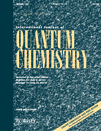
INTERNATIONAL JOURNAL OF QUANTUM CHEMISTRY
Scope & Guideline
Exploring the Quantum Frontier of Chemistry
Introduction
Aims and Scopes
- Theoretical and Computational Chemistry:
The journal emphasizes the development and application of theoretical frameworks and computational methods to study chemical systems at the quantum level. This includes density functional theory (DFT), quantum Monte Carlo (QMC), and ab initio methods. - Molecular Dynamics and Simulations:
Research published in the journal frequently employs molecular dynamics simulations to explore the time-dependent behavior of molecular systems, providing insights into reaction mechanisms and molecular interactions. - Material Science Applications:
The journal highlights studies that apply quantum chemical methods to design and characterize new materials, particularly in areas such as photovoltaics, thermoelectrics, and catalysis. - Intermolecular Interactions:
A significant focus is placed on understanding non-covalent interactions, such as hydrogen bonding, van der Waals forces, and π-π stacking interactions, which are crucial for molecular recognition and self-assembly. - Pharmacoinformatics and Drug Design:
The journal features research that utilizes quantum chemical calculations to predict the properties of drug candidates, facilitating the design of new therapeutic agents and understanding their interactions with biological targets.
Trending and Emerging
- Machine Learning and AI in Chemistry:
The integration of machine learning techniques with quantum chemistry is rapidly gaining momentum, with researchers leveraging AI for predictive modeling and data analysis, enhancing the efficiency of computational studies. - Advanced Materials for Energy Applications:
There is an increasing focus on the design and characterization of advanced materials, particularly those related to energy conversion and storage, such as perovskites, thermoelectric materials, and catalysts. - Quantum Computing Applications:
Research exploring the application of quantum computing in solving complex chemical problems is emerging as a significant trend, promising to revolutionize computational chemistry and molecular simulations. - Multiscale Modeling Approaches:
The journal is witnessing a rise in studies employing multiscale modeling techniques that combine quantum mechanical and molecular mechanical methods to address complex chemical systems more comprehensively. - Sustainability and Green Chemistry:
An increasing number of papers focus on sustainable practices, including the design of eco-friendly materials and processes, driven by the need for environmentally conscious research in chemistry.
Declining or Waning
- Classical Computational Methods:
There has been a noticeable decline in papers relying solely on classical computational techniques, as researchers increasingly favor advanced quantum mechanical methods that provide more accurate and detailed insights into molecular behavior. - Focus on Small Molecules:
Research targeting small organic molecules is becoming less common, with a shift towards more complex systems, including materials science and nanotechnology applications. - Traditional QSAR Studies:
While quantitative structure-activity relationship (QSAR) studies remain relevant, there is a waning interest in traditional approaches, as machine learning and artificial intelligence methods gain traction for predicting chemical properties. - Static Molecular Systems:
The exploration of static molecular systems is decreasing as dynamic and time-resolved studies become more prominent, reflecting a growing interest in the temporal aspects of molecular interactions.
Similar Journals
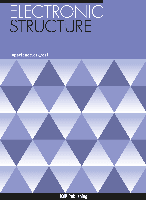
Electronic Structure
Advancing Knowledge in Condensed Matter PhysicsElectronic Structure is a pivotal journal in the field of condensed matter physics, published by IOP Publishing Ltd, a prominent name in the dissemination of scientific literature. Since its inception in 2019, the journal has rapidly gained recognition, currently holding a commendable Q1 ranking in Condensed Matter Physics, alongside respectable Q2 rankings in Electrical and Electronic Engineering, Electrochemistry, Electronic, Optical and Magnetic Materials, and Materials Chemistry as of 2023. With a strong emphasis on original research, reviews, and innovative methodologies, Electronic Structure serves as a vital platform for researchers, professionals, and students alike, enabling access to high-impact findings in diverse areas of study relevant to electronic structure and properties of materials. The journal ensures wide dissemination of knowledge in the engineering and physical sciences communities, making it an essential resource for anyone looking to stay at the forefront of advancements in these dynamic fields.
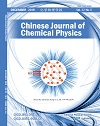
CHINESE JOURNAL OF CHEMICAL PHYSICS
Fostering Collaboration in the World of Chemical PhysicsChinese Journal of Chemical Physics, published by the Chinese Physical Society, serves as a pivotal platform for advancing the field of chemical physics, encompassing groundbreaking research and innovative methodologies since its inception in 2000. With an ISSN of 1674-0068 and E-ISSN of 2327-2244, the journal has established itself within the academic community, reflected in its 2023 classification as Q3 in Physical and Theoretical Chemistry and a Scopus rank of #142 out of 189, representing the 25th percentile in this competitive field. Although it does not currently operate as an open-access publication, its commitment to disseminating pivotal scientific research continues to attract scholars and professionals alike. The journal aims to bridge the gap between theoretical principles and practical applications in chemical physics, thereby fostering collaboration and innovation. By contributing significantly to the discourse in this dynamic domain, the Chinese Journal of Chemical Physics remains an essential resource for researchers, professionals, and students eager to stay abreast of contemporary developments.
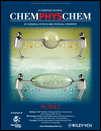
CHEMPHYSCHEM
Pioneering Research at the Intersection of Chemistry and PhysicsCHEMPHYSCHEM, published by WILEY-V C H VERLAG GMBH in Germany, stands as a pivotal resource for researchers and professionals in the fields of Atomic and Molecular Physics, as well as Physical and Theoretical Chemistry. With a commendable impact across its converged years from 2000 to 2024, the journal is categorized in the second quartile (Q2) for both aforementioned fields according to the 2023 metrics, underscoring its significance in advancing scientific dialogue and research. CHEMPHYSCHEM is committed to disseminating high-quality, peer-reviewed research articles that delve into the intricate interplay between chemistry and physics, making it an essential read for students and experts alike. The journal does not currently offer open access options, allowing for focused scholarly discussions that cater to the academic community's needs. As reflected in its Scopus rankings, CHEMPHYSCHEM maintains respectable standings, ranking #84/224 and #90/189 in its respective categories, demonstrating its commitment to high-impact research and innovation.

Journal of Physical Chemistry Letters
Connecting Researchers with the Latest in Chemical InnovationThe Journal of Physical Chemistry Letters, published by the American Chemical Society, is a premier journal in the fields of Physical and Theoretical Chemistry, Materials Science, and Nanoscience and Nanotechnology. Since its inception in 2010, this journal has established itself as a significant platform for rapid publications of cutting-edge research that bridges various branches of chemistry, providing a critical avenue for advancing knowledge in these dynamic fields. With an impressive impact factor and a consistent ranking in the top quartile (Q1) of its categories, the journal ranks 25th out of 189 in Physical and Theoretical Chemistry and 79th out of 463 in General Materials Science according to Scopus metrics. Although it currently does not operate under an open access model, it remains an essential resource for academics seeking to disseminate their findings to a global audience. Researchers, professionals, and students alike will find invaluable insights and contributions that push the boundaries of scientific inquiry within these disciplines.
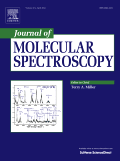
JOURNAL OF MOLECULAR SPECTROSCOPY
Unveiling Molecular Mysteries Through Rigorous ResearchJOURNAL OF MOLECULAR SPECTROSCOPY, published by Academic Press Inc Elsevier Science, serves as a pivotal platform in the fields of Atomic and Molecular Physics, Physical and Theoretical Chemistry, and Spectroscopy. With its inaugural issue dating back to 1957, this journal has maintained a rich history of disseminating significant research findings, contributing to an understanding of molecular behavior and interactions through various spectroscopic techniques. Although currently positioned in the Q3 quartile across its respective categories as per 2023 rankings, the journal aims to enhance its stature further by promoting rigorous and impactful studies that push the boundaries of knowledge in spectroscopy. While access to this publication is not open, the rigorous peer-review process ensures that the articles published maintain high standards of scientific excellence, appealing to researchers, professionals, and students seeking comprehensive insights into molecular spectroscopy. The journal's ISSN is 0022-2852 and its E-ISSN is 1096-083X.
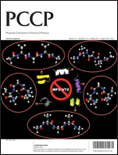
PHYSICAL CHEMISTRY CHEMICAL PHYSICS
Bridging Disciplines for a Deeper Understanding of Chemical PhenomenaPhysical Chemistry Chemical Physics is a premier interdisciplinary journal published by the Royal Society of Chemistry, dedicated to advancing the fields of physical chemistry and chemical physics. With an impressive impact factor and categorized in the Q2 quartiles for both Physical and Theoretical Chemistry and Physics and Astronomy, this journal serves as a vital platform for the dissemination of high-quality research findings from 1999 through 2024. Based in the United Kingdom, the journal is committed to providing open access to its articles, enhancing the visibility and accessibility of research to a global audience. Researchers, professionals, and students alike are encouraged to contribute to this esteemed journal, ensuring impactful discussions and significant advancements in the understanding of chemical and physical phenomena. With strong Scopus rankings underscoring its relevance, Physical Chemistry Chemical Physics stands out as an essential resource for specialists striving to innovate and excel within these dynamic fields.

JOURNAL OF MOLECULAR MODELING
Transforming Theoretical Chemistry into Practical SolutionsJOURNAL OF MOLECULAR MODELING, published by Springer, is a pivotal resource for researchers and professionals in the fields of chemistry, computer science, and molecular sciences. The journal's ISSN is 1610-2940, with an E-ISSN of 0948-5023, reflecting its commitment to disseminating cutting-edge research from 1996 to 2024. Although the journal does not operate under an Open Access model, it remains an invaluable platform for the publication of innovative studies related to computational methods, theoretical chemistry, and molecular simulations. With a notable categorization across multiple quartiles—including Q4 in Catalysis and Q3 in Computational Theory and Mathematics—the journal holds a distinct rank in Scopus, highlighting its influence and contribution to the discipline. The importance of this journal lies in its ability to bridge the gap between theoretical understanding and practical applications, making it essential reading for students and scholars seeking to advance their knowledge and research in molecular modeling.
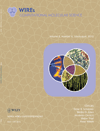
Wiley Interdisciplinary Reviews-Computational Molecular Science
Unlocking the Potential of Molecular Interactions through ComputationWiley Interdisciplinary Reviews: Computational Molecular Science is a premier journal published by WILEY, dedicated to the intersection of computational techniques and molecular science. Boasting an impressive impact factor and consistently ranking in the Q1 category across several key disciplines including Biochemistry, Computational Mathematics, Computer Science Applications, Materials Chemistry, and Physical and Theoretical Chemistry, this journal plays a crucial role in disseminating high-quality research that bridges multiple fields. With its focus on providing a platform for interdisciplinary dialogue and innovative computational solutions, it serves as an essential resource for researchers, professionals, and students eager to push the boundaries of molecular science. While the journal does not currently offer open access, it remains a vital conduit for scholarly communication, fostering advancements in understanding molecular interactions through computational methods. The journal is based in the United States, contributing to its global outreach and impact in the scientific community.
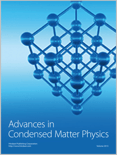
Advances in Condensed Matter Physics
Fostering Collaboration in Cutting-Edge PhysicsAdvances in Condensed Matter Physics is a distinguished journal published by HINDAWI LTD, dedicated to the rapid dissemination of high-quality research in the field of condensed matter physics. Since its inception in 2008, this Open Access journal has facilitated wide accessibility to cutting-edge findings and theoretical advancements, with aims to foster collaboration and innovation within the scientific community. With an ISSN of 1687-8108 and an E-ISSN of 1687-8124, the journal covers an extensive range of topics, from quantum materials to nanotechnology, ensuring relevance and engagement across various sub-disciplines. As a testament to its impact in the field, it is ranked in the Q3 category for 2023 within Scopus and holds a position in the 34th percentile for physics and astronomy. The journal's continuous commitment to publishing significant exploratory research until 2024 makes it a pivotal resource for researchers, professionals, and students eager to stay on the leading edge of condensed matter physics advancements.

JOURNAL OF PHYSICAL CHEMISTRY A
Connecting researchers to the latest in physical chemistry.Journal of Physical Chemistry A, published by the American Chemical Society, serves as a leading platform for disseminating high-quality research in the fields of physical and theoretical chemistry. With an ISSN of 1089-5639 and E-ISSN of 1520-5215, this journal maintains a rigorous standard, demonstrated by its position in the Q2 category for both physical and theoretical chemistry as well as miscellaneous medicine within its 2023 category quartiles. As part of the greater ACS network, it operates with a solid Scopus rank of 76/189, placing it within the 60th percentile, emphasizing its credibility and impact in the chemistry community. The journal's objective is to enhance the understanding of molecular phenomena through innovative experimental and computational approaches, making it essential reading for researchers, professionals, and students seeking to advance their knowledge and contribute to scientific discussion. With additional open access options, the Journal of Physical Chemistry A continues to foster collaboration and the sharing of ideas in the vibrant scientific landscape of the United States and beyond.